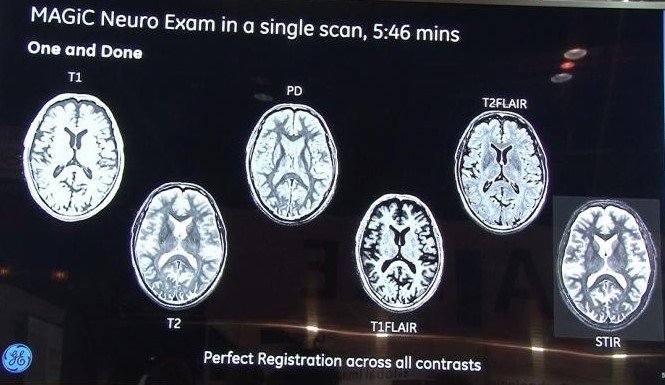The U.S. Food and Drug Administration (FDA) granted market clearance for GE Healthcare’s MAGiC (MAGnetic resonance image Compilation) software, the industry’s first multi-contrast magnetic resonance imaging (MRI) technique that delivers eight contrasts in a single acquisition in fraction of the time of conventional imaging. MAGiC is the result of a collaboration with SyntheticMR AB and gives clinicians more data than conventional scanning. This technique gives users the flexibility to manipulate MR images retrospectively leading to significant timesaving, fewer rescans and therefore cost savings, which combined, can assist the clinician in making a more decisive diagnosis. MAGiC is an acquisition technique that allows the ability to modify image contrast after scanning has been completed, which is not possible with conventional imaging. GE said MAGiC delivers more potential for the clinician to utilize changes in the image contrast to enhance their diagnosis. With conventional imaging, a radiologist may need to order a rescan if the proper contrast was not acquired, requiring the patient to return and the technologist to conduct another scan. With MAGiC, the radiologist can view multiple different contrasts acquired from a single scan. “MAGIC simultaneously provides a new level of protocol efficiency and tissue characterization,” said Howard Rowley, M.D., professor of radiology, neurology and neurosurgery at the University of Wisconsin – Madison, and president of the American Society of Neuroradiology. “The flexibility to post-process a wide variety of key image families with different tissue contrasts from a single acquisition is groundbreaking. This will be a major advance for fast brain protocols and patient comfort due to the reduced scan time.” GE Healthcare has conducted and submitted to the U.S. FDA a blinded 1.5T and 3.0T, multi-center, multi-reader clinical study comparing MAGiC to conventional scanning. This study involved both MAGiC and conventional images collected from six sites and 109 patients that were evaluated by seven readers. The study verified that the image quality of MAGiC was comparable to conventional images at a fraction of the scan time, which may improve patient throughput and comfort. For the first, clinicians will have the ability to generate multiple image contrasts in a single MR scan – including T1, T2, STIR, T1 FLAIR, T2 FLAIR, Dual IR, Phase Sensitive IR, and Proton Density weighted images of the brain in a single acquisition. To change the contrast, users simply move the cursor on the interface to change the parameters such as TR, TE and TI. MAGiC enables one scan that can do the work of many and can be processed in many unique and independent ways. Additionally, MAGiC can generate parametric maps enabling further tissue analysis, which is key in the emerging approach of precision medicine. The measurement of tissue values like T1, T2 and PD gives clinicians more information and therefore better insights into the disease of that specific patient, leading to a more confident diagnosis. “MAGiC is a terrific clinical innovation,” said Eric Stahre, president and CEO, GE Healthcare MR. “This study proves that this technique can improve the way clinicians conduct neuro scans and diagnose their patients. Neuro scans are approximately thirty percent of all MR scans; therefore MAGiC could have a tremendous impact on the MR community. GE Healthcare is committed to delivering industry-leading MR innovations that advance clinical care. We are very excited to be the first company to bring MAGiC to market for our customers and their patients. ” MAGiC is available on GE’s Optima MR450, Optima MR450w, Discovery MR750, Discovery MR750w and Signa Pioneer MRI systems. For more information: www.gehealthcare.com

